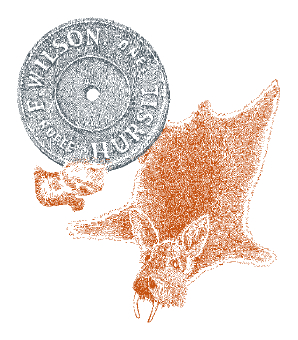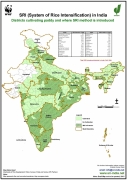/regions/political
Political
Goa, Goa, Gone - A documentary that explores the impact of mining on Goa's environment
Posted on 18 Jun, 2010 02:01 AMGoa is the second smallest state in India, with a total land mass of 3702 sq kms, and is one of the world's 12 bio-diversity hot-spots. While the largest industry is Tourism, conversely the second largest is mining. 8% of this state’s land is already under mining, mostly for iron ore, which is largely exported to China.

Ek Phirangi Raja - Chutki Bhar Namak Paseri Bhar Anyay: The story of Frederick Wilson and the Great Indian Hedge
Posted on 18 Jun, 2010 12:33 AM Ek Phirangi Raja
Ek Phirangi Raja
In this essay, Romesh Bedi recounts the true story of Frederick E Wilson, a British army officer, who deserted the army after the Sepoy Mutiny of 1957, escaped to the Himalayas, and settled in Harsil, a remote village in Uttarakhand on the banks of the Bhagirathi.
Wilson makes a flourishing business from the export of skins, fur, musk from the region, and rips the local deodar forest, to cash in the growing demand for wooden sleepers during the expansion of the Indian railways by the British, which were sent down to the plains through the rivers. Wilson soon acquires a lease from the Raja of Tehri-Garhwal, for his timber business and keeps the Raja happy by giving him a share of the profits, and even begins to mint his own local currency, because of which locals start calling him Raja.
Neel Ka Dhabba - Sansthayen Narayan Parayan Bane: Essays in Hindi by Mahatma Gandhi and Vinobha Bhave
Posted on 17 Jun, 2010 01:05 AMNeel Ka Dhabba recounts how Gandhiji washed away the stain of cruel oppression of Champaran's Indigo farmers forcibly made to grow Indigo by processors-traders, using caution, non-violence, courage and humility. The essay is narrated by Gandhiji himself.
In Sansthayen Narayan Parayan Bane, Acharya Vinoba takes a critical look at the work of voluntary development organisations, and details what and how their goals, functioning and funds management should be.

Climate policy watch
Posted on 16 Jun, 2010 11:57 PMClimate change has been denied, labelled as a myth and a political manoeuvre or synergised with individual weather events.
Lake series of Bangalore - Maps and Area - ENVIS (Govt of Karnataka)
Posted on 16 Jun, 2010 12:44 AMThe naturally undulating terrain of Bangalore city, with its hills and valleys, lends itself perfectly to the development of lakes that impound rainwater, store it for future use and ensure ground water recharge. Lakes are thus live ecological systems, and play a crucial role in the supporting life, including human.
Lakes in Bangalore were designed in cascades from higher to lower elevations; as a lake overflowed the excess water would flow into the next lake in the cascade. The flow of water is from North to South-east as well North to South-west along the natural gradient of the land.
Historical maps of Indian towns and cities (1893, 1909, 1924)
Posted on 15 Jun, 2010 11:11 PMThis set of maps of Indian towns and cities, dated between 1893 and 1924, give an idea of historical water bodies in each town/city, and can be compared with present day maps, to discover water bodies, that may have been lost to urban encroachments or other human interventions.
System of Rice Intensification and Paddy Cultivation - Maps developed by the WWF-ICRISAT Project
Posted on 14 Jun, 2010 06:23 PM Paddy, one the country's staple crops is cultivated all over the country, barring parts of Jammu and Kashmir, Gujarat and Rajasthan. This set of interesting maps about Paddy and System of Rice Intensification (SRI) from the SRI India website, maintained by the WWF-ICRISAT Project (a joint initiative of WWF and ICRISAT), give a bird's eye view of the districts under Paddy and SRI Paddy cultivation, and the Paddy productivity in various districts of the country.
Paddy, one the country's staple crops is cultivated all over the country, barring parts of Jammu and Kashmir, Gujarat and Rajasthan. This set of interesting maps about Paddy and System of Rice Intensification (SRI) from the SRI India website, maintained by the WWF-ICRISAT Project (a joint initiative of WWF and ICRISAT), give a bird's eye view of the districts under Paddy and SRI Paddy cultivation, and the Paddy productivity in various districts of the country.
Districts with Paddy cultivation and where SRI approach has been introduced: Of the total 604 districts in India, paddy is cultivated in 564 districts. Of these, in 246 districts, SRI paddy cultivation approach has been introduced (data as of 2010). The spread of SRI has been most widespread in Uttarakhand, Eastern Madhya Pradesh, Orissa, Jharkhand, West Bengal, Andhra Pradesh, Tamil Nadu and Karnataka, as 50-95% of the districts in these regions/states have presence of SRI.
Training on groundwater, ACWADAM, Pune
Posted on 14 Jun, 2010 12:40 PM 
Organizer: ACWADAM
Main Topics:
Water and the City : Towards Sustainable Solutions, Singapore International Water Week, Singapore
Posted on 14 Jun, 2010 11:35 AMWater and the City : Towards Sustainable Solutions
Theme: “Sustainable Cities: Clean and Affordable Water”
Water is life and yet, this natural resource is often taken for granted. With increasing urbanisation around the world exacerbated by climate change, water has become one of the world’s most precious commodities. Rapid industrial, economic, and social development has put additional strain on many countries’ limited water resources.
Rain water harvesting or drain water harvesting - A serious approach to water conservation needed
Posted on 12 Jun, 2010 08:41 PMIF CONSERVATION OF WATER SOURCES, RECYCLE, REUSE IS SERIOUSLY NOT ADOPTED NOW THE TIME IS NOT FAR WHEN WE MAY NEED TO "DRAIN HARVEST" WASTEWATER FOR ALL KINDS OF CONSUMPTIONS.
